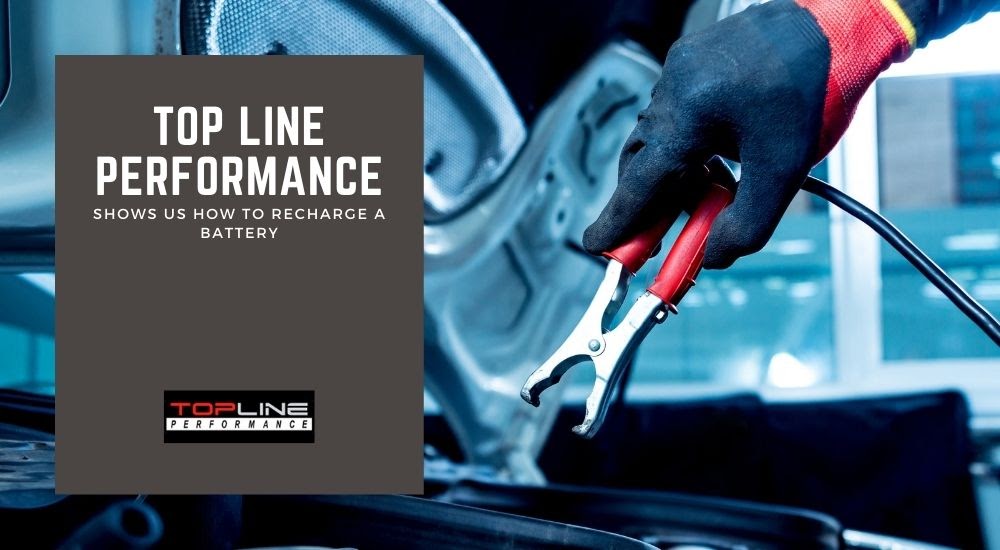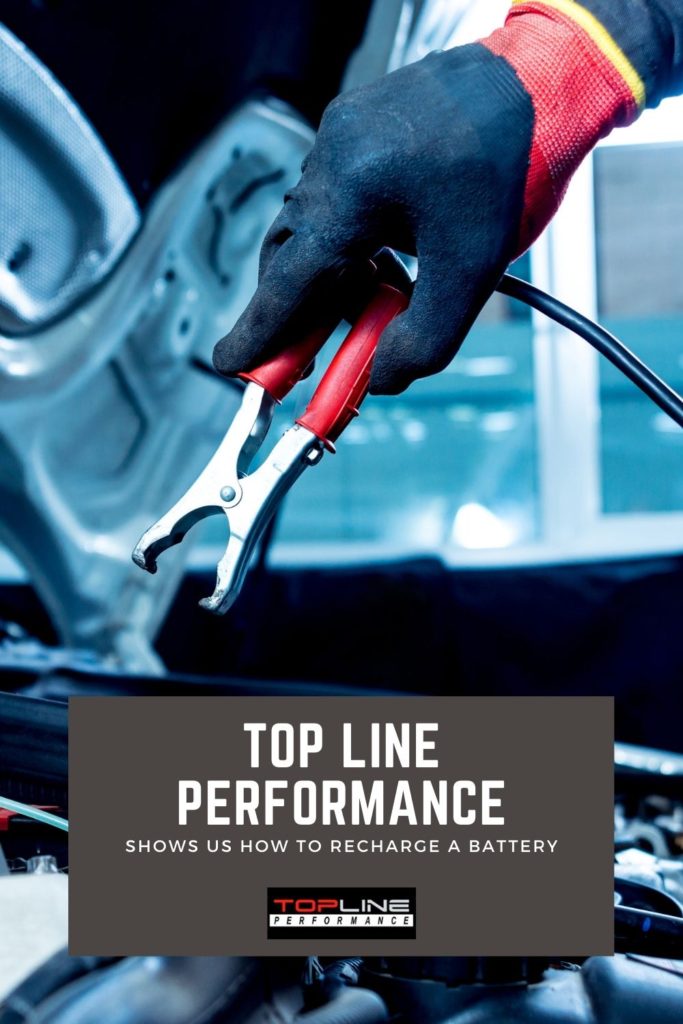
Top Line Performance, an auto repair shop in Huntington Beach Ca, says that charging a dead battery is a bit more difficult, and possibly more dangerous, than charging your cell phone. Why? Because you don’t want to get shocked or accidentally get into physical contact with battery acid! Also, you don’t want to go back to square one with a dead battery if you didn’t recharge your car’s battery long enough. Therefore, you should review this article to understand how to correctly charge a car battery and how long you should allow your car battery to charge.
Auto Repair Shops in Huntington Beach Ca Explain What A Car Battery Does
Before you go all steam ahead with your battery recharging assignment, you need to understand and appreciate the functions of a car battery. A car battery provides two purposes:
Purpose 1: It gives your car its necessary starting power.
The battery sends voltage to the car’s starter by converting chemical energy into electrical energy.
Purpose 2: It keeps your car operating.
The car battery supplies a steady flow of voltage to keep the engine and accessories operating, including the car’s radio, headlights, and any onboard computers your vehicle may have.
When a vehicle’s battery is too weak or old, it won’t be capable of doing any of these things. There is a great possibility that you have to recharge your car’s battery if your engine is sluggish or slow to start, or if it’s totally dead.
Besides starting your car, charging your battery can help you figure out whether it’s time for a new one. Case in point, if you leave an interior light on overnight, it will suck your battery dry. If you have a “healthy” battery, however, it should recharge very quickly! When a battery has to be replaced, it won’t have the ability to hold a charge or will require multiple recharges.
What To Do Prior To Performing A Battery Recharge
Now that you know what a car battery does, it’s time to get down to the nuts and bolts of recharging your car battery.
Have A Look At Your Manual
Every car operates differently and your vehicle’s manufacturer might have particular instructions for your make and model.
Stay Safe
First off, you should always wear safety gloves and glasses, and make it a point to charge the battery in a place where there aren’t any flames, sparks, or smoke. Furthermore, if you are wearing jewelry, take it off since this is a safety hazard.
Breathe In The Smells Around You
If you smell something that resembles rotten eggs, then your battery could be leaking dangerous gases and you shouldn’t try to charge the battery. Keep away from the vehicle, get it towed, and let the auto repair technicians of Top Line Performance in Huntington Beach take a look.
Inspect The Heat
If the heat is rising from the battery case, this could mean it’s working harder than it should. When this happens, keep the hood up and allow the battery to cool down before attempting to charge it.
Be Aware Of Corrosion
Typically, corrosion has a greenish, crusty substance around your car’s battery ports. This is a by-product of battery acid fumes when it comes into contact with air. It’s also very common in many lead-acid batteries. Nevertheless, it can put your vehicle’s electrical system in jeopardy and make it more difficult for the battery to receive the charge. You can eliminate corrosion by simply cleaning up the oxidation with a brush and a combination of water and baking soda, which will have a paste-like consistency.
How To Recharge With A Portable Battery Charger
When you have your battery prepared, you are ready to go right ahead and charge it! If you are lucky enough to have a battery charger in the trunk of your car or you can gain access to one, begin these following steps.
Step 1: Connect The Charger To The Battery
This method is similar to how you would go about jumpstarting a battery. First of all, make sure the charger and your vehicle are off, then connect the positive (red) clamp to the positive post on your battery.
Now connect the negative (black) clamp to a stable place on the car’s body or chassis. Although you can attach the black clamp to the battery’s negative terminal, it’s not the safest thing you could do, the reason being the potential leakage of hydrogen gas by the battery. If that is the case, even the slightest spark could set off an explosion or fire. Boom!
Step 2: Get The Charger Ready
This means that on the charger you have to modify the volts and amps. If you adjust your battery charger to lower amps, it will result in a longer charging period, but it may also result in a more reliable charge. However, if you are looking to recharge your battery quickly, turn the dial to high. Simply make sure you follow the instructions that come with the charger and any guidance provided in your owner’s manual.
Step 3: Switch The Charger On
If your charger has to be plugged into a power supply, make sure you do that. If it doesn’t need power from an electrical source, turn it on and let it start doing its magic. Based on the kind of charger you have, it might stop automatically when the battery is full or it might power off after a fixed period.
Step 4: Disconnect The Charger
Once the battery has returned to its car starting abilities, turn off the battery charger and if you have to, unplug the charger from its power source. Now it’s time to detach the clamps. It may sound counterintuitive, but this should be done in reverse order, so the negative (black) clamp should be the first one you remove, then the positive (red) clamp.
If your battery isn’t holding the charge, then you have to get it towed to your auto repair technician’s shop where he can repair the problem. It’s most likely possible that it’s time for a new car battery.


